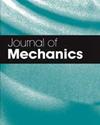Computational Aerodynamics With Isogeometric Analysis
IF 1.8
4区 工程技术
Q3 MECHANICS
引用次数: 4
Abstract
The superior accuracy isogeometric analysis (IGA) brought to computations in fluid and solid mechanics has been yielding higher fidelity in computational aerodynamics. The increased accuracy we achieve with the IGA is in the flow solution, in representing the problem geometry, and, when we use the IGA basis functions also in time in a space–time (ST) framework, in representing the motion of solid surfaces. It is of course as part of a set of methods that the IGA has been very effective in computational aerodynamics, including complex-geometry aerodynamics. The set of methods we have been using can be categorized into those that serve as a core method, those that increase the accuracy, and those that widen the application range. The core methods are the residual-based variational multiscale (VMS), ST-VMS, and arbitrary Lagrangian–Eulerian VMS methods. The IGA and ST-IGA are examples of the methods that increase the accuracy. The complex-geometry IGA mesh generation method is an example of the methods that widen the application range. The ST Topology Change method is another example of that. We provide an overview of these methods for IGA-based computational aerodynamics and present examples of the computations performed. In computational flow analysis with moving solid surfaces and contact between the solid surfaces, it is a challenge to represent the boundary layers with an accuracy attributed to moving-mesh methods and represent the contact without leaving a mesh protection gap.计算空气动力学与等几何分析
等高几何分析(IGA)为流体和固体力学计算带来了更高的精度,在计算空气动力学中产生了更高的保真度。我们用IGA实现的精度提高是在流解中,在表示问题几何形状时,当我们在时空(ST)框架中使用IGA基函数时,在表示固体表面的运动时。当然,作为一系列方法的一部分,IGA在计算空气动力学方面非常有效,包括复杂几何空气动力学。我们一直在使用的方法可以分为核心方法、提高准确性的方法和扩大应用范围的方法。其核心方法是基于残差的变分多尺度(VMS)、ST-VMS和任意拉格朗日-欧拉VMS方法。IGA和ST-IGA是提高准确性的方法的例子。复杂几何IGA网格生成方法是拓宽应用范围的方法之一。ST拓扑更改方法是另一个例子。我们提供了这些方法的概述,以iga为基础的计算空气动力学和执行计算的实例。在具有移动实体表面和实体表面之间接触的计算流分析中,如何在不留下网格保护间隙的情况下准确地表示边界层是一个挑战。
本文章由计算机程序翻译,如有差异,请以英文原文为准。
求助全文
约1分钟内获得全文
求助全文
来源期刊

Journal of Mechanics
物理-力学
CiteScore
3.20
自引率
11.80%
发文量
20
审稿时长
6 months
期刊介绍:
The objective of the Journal of Mechanics is to provide an international forum to foster exchange of ideas among mechanics communities in different parts of world. The Journal of Mechanics publishes original research in all fields of theoretical and applied mechanics. The Journal especially welcomes papers that are related to recent technological advances. The contributions, which may be analytical, experimental or numerical, should be of significance to the progress of mechanics. Papers which are merely illustrations of established principles and procedures will generally not be accepted. Reports that are of technical interest are published as short articles. Review articles are published only by invitation.
 求助内容:
求助内容: 应助结果提醒方式:
应助结果提醒方式:


